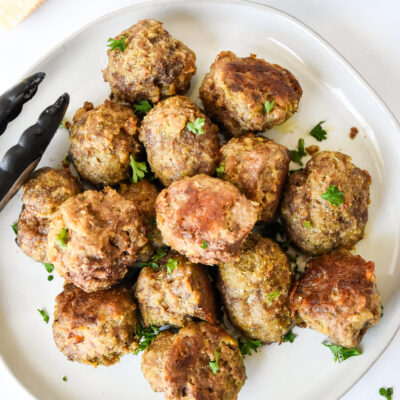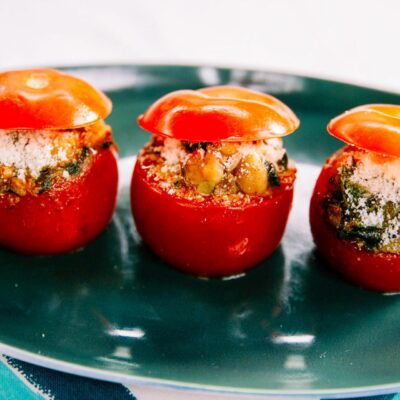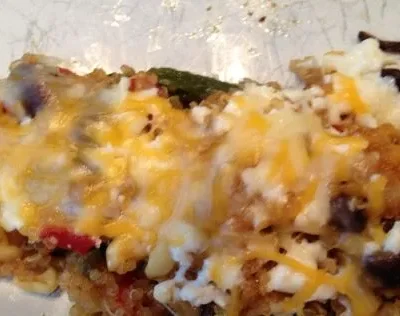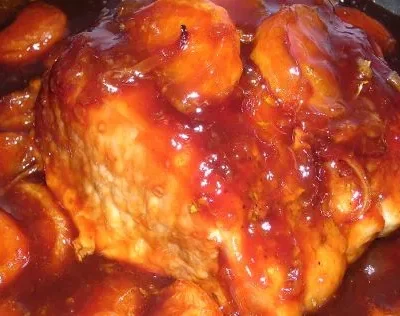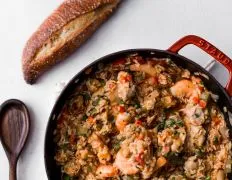Ingredients
-
-
1/2
-
1
-
1/4
-
1/2
-
1/4
-
4
-
2
-
1
-
2
-
-
-
-
-
Directions
Ethiopian Spicy Beef Stew Key Wat, Every now and then someone requests Ethiopian recipes. Most of the easily available recipes are the traditional stews, and there are hundreds of individual variations of these recipes with the same name. In the Kitchen Information Forum you can find a short glossary of Ethiopian food terms. The word WAT means a stew, and the basic spice mixture used in almost all stews are BERBERE. The recipes are economical, easy and tasty, and always served with INJERA flatbread. If you type “Injera” in the search line on Food.com you will find more than a dozen recipes. Make the Berbere spice mix first. Prep time tries to include making this spice mix from scratch, although it is available from specialty and Ethiopian stores., This recipe is close but it isn’t the way I learned how to make it. My husband is from Ethiopia and his sister, family, and friends taught me how to cook many Ethiopian dishes. The main thing that I do differently is the onions. They need to cooked with Niter kibbeh over a low heat for a long time until they get a dark brown caramelization. During the long and slow cooking process, the moisture from the onions and butter will evaporate and the onions become dry. That is when you add a little more of the Niter kibbeh. I sometimes add a drizzle of water as well. Stir them frequently to keep them from sticking to the pot. I’ll admit, I make a three gallon pot so, use about 5 pounds of onions but, the method is the same. It takes me about 1 1/2 hours just to cook the onions. The dark, caramelized onions is what gives it a lot of flavor! When the onions are almost done, I mix up my berbere and then put it in a dry cast iron skillet over low heat to roast it forabout 5-minutes. This releases all the oils in the spices and intensifies the flavor. Then, I add the berbere to the onions and stir it in so it blends well. Depending on which dish I am making, chicken Doro Wat or beef Sega Wat, I add either chicken or beef broth — enough to make a thin sauce. Then I add in the beef or chicken and simmer it until the beef is very tender and falling apart or the chicken falls off the bones. I take the chicken out and pull the meat off the bones and add it back to the wat and I simmer it over low heat for a couple hours to reduce it down and let the sauce thicken to the consistency of a gravy. While it is simmering, I hard-boil eggs. After they are peeled, I put small slits just in the whites around the sides and add them whole to the wat. The eggs will absorb the sauce. FYI: I never add sugar… and I don’t know of anyone who does. Also, start easy with the berbere if you aren’t a big fan of hot and spicy! You can always add more to taste. Injera can be quite tricky to make and usually never turns out the first, or even second, time you make it. It is a fermnted sourdough crepe made with Teff flour Teff is native to Ethiopia and gluten-free, in case you’re wondering; however, not all injera is made with Teff so, if you are gluten intollerent, be sure to ask if has been made with Teff flour! and takes 3 or 4 days to make because it needs to ferment. Teff flour comes in different colors, including white or ivory, red, and dark brown. If you’re not comfortable in making injera from scratch, I suggest you find a local Ethiopian restaurant and purchase it from them. If that can’t be done, you can serve it with rice. Have fun and enjoy!, In the spice mix, I would turn down the cardamom and paprika and turn up the cumin and coriander. The flavor was far too earthy and the cardamom especially overpowered the other smells. If you want it thicker, add some yogurt at the very end. Beyond that, great recipe. I actually slow cooked this recipe and it made the beef so tender. This dish also goes great with some hummus and chutney on the side. Pita bread or parathas are fine if you don’t have injera.
Discover ground-breaking new supplements! SHOP & SAVE
Steps
|
1
Done
|
To Make the Berbere Spice Mix: Mix All the Spices and Toast in a Dry, Hot Pan, Shaking to Prevent Scorching. Cool the Mixture, Then Grind Into a Powder. the Small Coffee Bean Grinder Attachment Often Supplied With a Processor Is Ideal For This. Save the Leftover Spice in a Small Glass Bottle With a Tight-Fitting Lid. |
|
2
Done
|
* Berbere Can Be Either a Dry or a Wet Paste, and Can Be Bought Ready-Made from Ethiopian or Speciality Food Shops. |
|
3
Done
|
to Make the Stew: Add the Oil and Ghee or Butter to a Pan Over Medium Heat. Niter Kibbeh, the Real Thing, Is a Spice-Infused Clarified Butter Which Is Used as the Frying Medium For Most Ethiopian Dishes. |
|
4
Done
|
Gently Fry the Onion Until Very Soft and Just About Caramelised. Add the Garlic, Berbere Spice, Tomato Paste and Sugar, Mix Well, and Cook Until Thick. |
|
5
Done
|
Add a Little of the Stock or Water to Make a Paste. Add the Remaining Liquid and the Meat Cubes, Season With Salt, and Cook Gently For 1 Hour, or Until the Meat Is Tender and the Sauce Thickened and Reduced. |
|
6
Done
|
Serve With Injera, the Ethiopian Flatbread. If Correctly Made and Almost Crispy, Pieces Can Be Used as Eating Utensils. |







